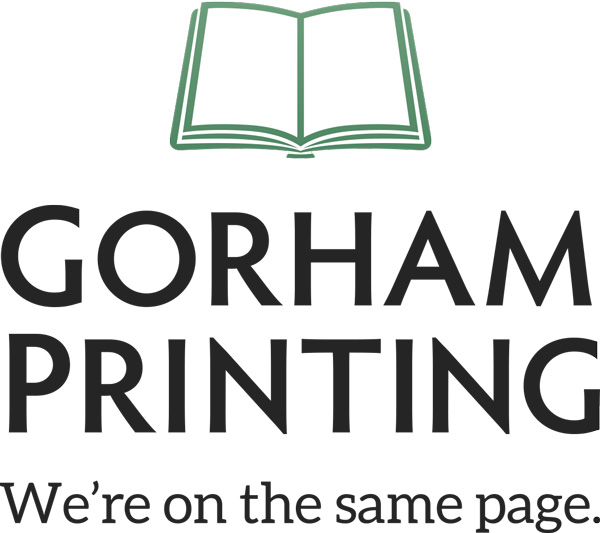You create the perfect sundae- a couple scoops of ice-cream, drizzle of chocolate syrup, some sprinkles and nuts, and a spritz of whipped cream. You are ready to take the first bite but something is missing, the cherry! If you picture your printed book like you would a sundae, the cover finish is the cherry on top, the last ingredient needed for the perfect sundae.
However, which cover finish do you choose? Choosing a cover finish can feel pretty daunting. There are many variables to consider. How will you be distributing your books? Will it need more durability? Does your cover image need shine or more a subtle look? And to top it all off, you need to consider price.
To help you make this decision and choose the best cover finish for your book, we’ve compiled a list of the pros and cons of each finish option.
What Are the Cover Finish Options?
We offer three different cover finish options: – UV Liquid Coating, Gloss Film Lamination, and Soft-touch Matte Film Lamination. Book cover finishes can be applied to your softcover, printed hardcover, dust jacket and spiral bound book covers.
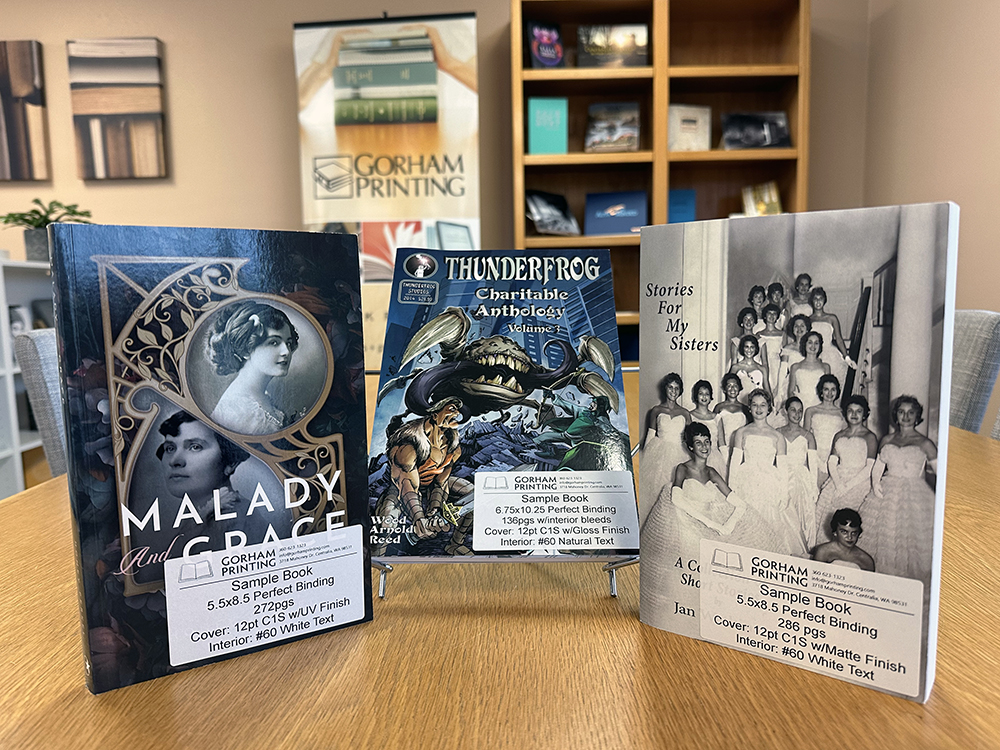
UV Liquid Coating
UV liquid coating is a liquid solution that is cured using ultraviolet and infrared lights. A nice simple shine, it is a great option for saving costs, common in the industry, and works great for just a simple shine.
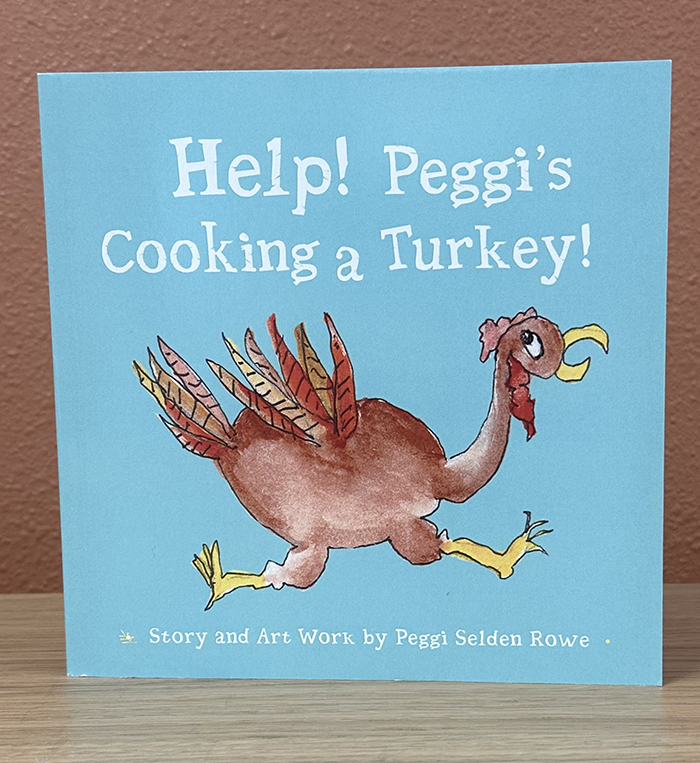
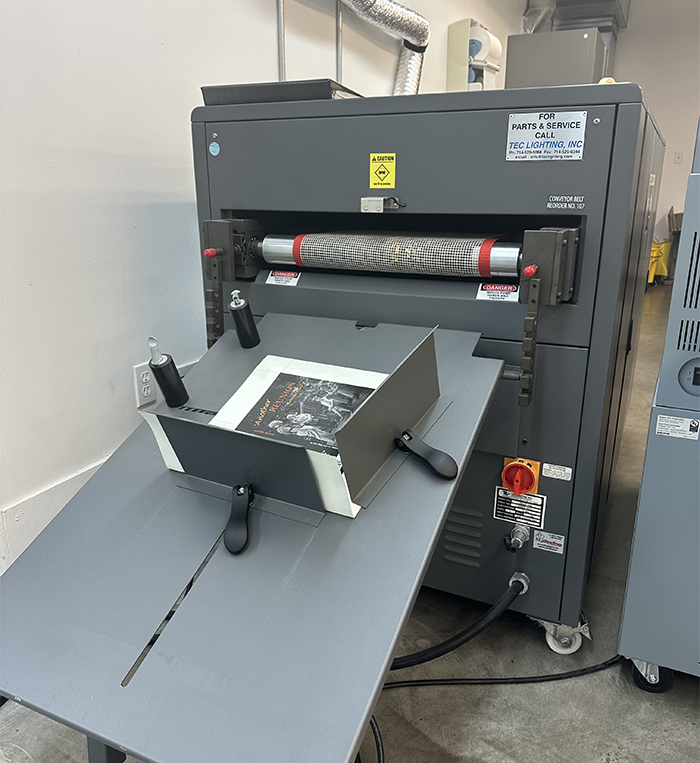
Pros:
- High Shine – UV liquid coating is a high shine that can make your colors pop!
- It’s Cost Effective – UV liquid coating doesn’t use film that overlays the whole cover, making it a great option if you are wanting to keep the price low to print your books.
- Prevents Curling – A book’s cover can curl due to the book making process. When using a traditional film lamination this adds more tension to the cover and can cause more of a curl on the finished books. However, UV liquid coating adds some protection but because it is a liquid and not a film it doesn’t cause the tension on the cover and helps it continue to lay flat.
Cons:
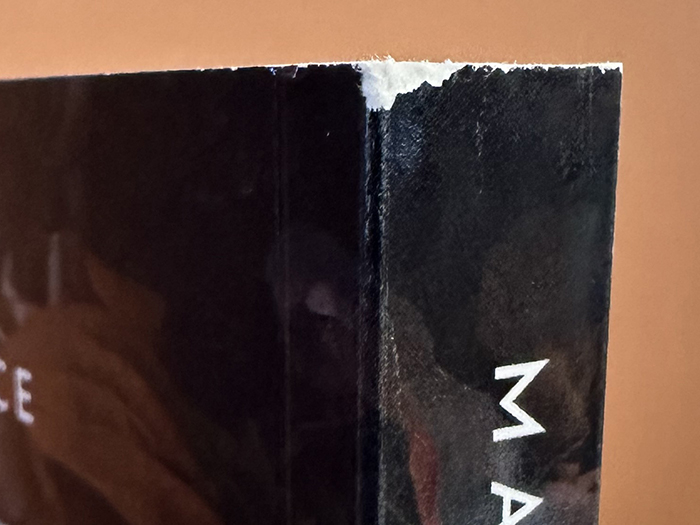
- Will Show Wear and Scuffs: UV liquid coating is not a protective coating and will show general wear and tear quickly. Especially if the book sees a lot of use and traveling. Just like books you see in bookstores that are brand new will have wear around the spine and edges just from the book production process. Streaking or scuffs will also appear more if the books are stored or transported in warm to hot temperatures.
- Noticeable on Dark Covers – Covers that are black or predominately dark will show wear even more. You most likely will see it even before you open the books from shipping and the production process. Some authors like this look but if you need something a bit more protection we recommend looking into film lamination.

Overall, uv liquid coating is a great starting option for authors, self-publishers, and publishers looking to print their books and keep costs down, but still offer a bit of a shine to their cover. It is also a great option for advanced reader copies or books that you are not concerned about seeing a little bit of wear.
Have you received our Free Guide Book to Printing and Self Publishing? It is a great example of the uv liquid coating and offers great tips and tricks for designing, printing, and marketing your book!
Gloss Film Lamination
Gloss film lamination is a reflective shiny film overlay, it provides a more polished look and durability that is a classic choice for many books.


soft-touch matte lamination.
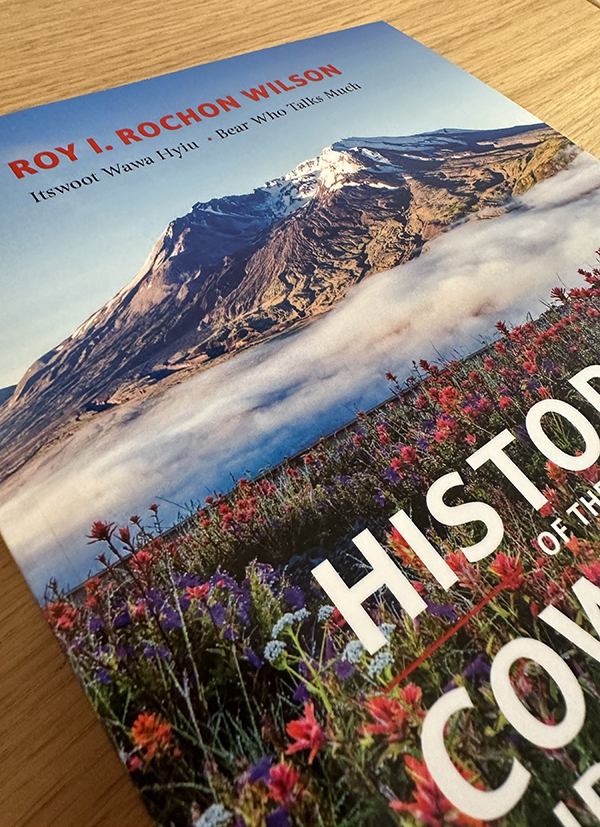
Pros:
- Better Protection – Since the lamination is a plastic film that lays on top of the entire cover, it provides protection that uv liquid coating would not. If you expect your book to be used frequently or plan to distribute to multiple locations you may want the extra protection of gloss film lamination.
- Looks Great with Photos – If your cover has an absolutely gorgeous photo that you really want to stand out, gloss film lamination can really amplify the image.
- Easy to Clean – If you have an outdoors book or a children’s book, gloss film lamination might be the right choice for you. With its smooth surface and thick film, it hides fingerprints easily and can be simply wiped off if small hands or outdoor dirty hands handle them.
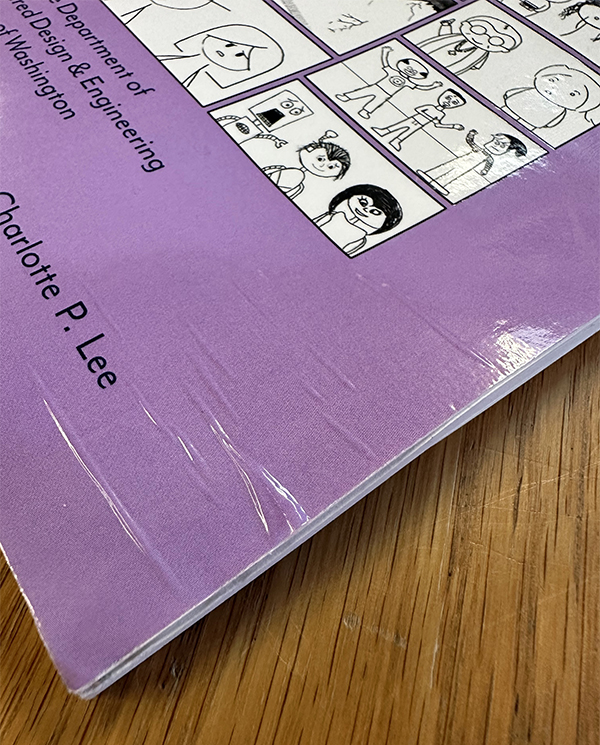
Cons:
- Easy to Leave Fingerprints – The very reflective film, while giving your book a great shine, is susceptible to fingerprints from whoever picks up the book.
- The Potential to Peel – If your books are not handled gently during transportation or if they are exposed to high temperatures, the film can become weak and start to peel.
- Cover Can Curl – When applying the gloss film lamination to your cover, it is stretched over the cover with the help of a heated lamp. Because of this, there is a natural tension from the lamination once it cools that will cause the cover on a softcover or spiral bound book to curl. This curling will relax overtime, but not completely.
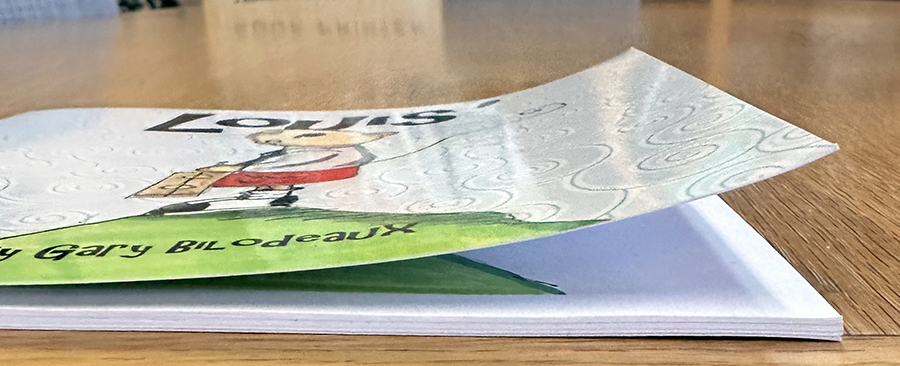
Gloss film lamination is a tried and true option that is great for all kinds of books! From children’s books, textbooks, memoirs, and photography books, gloss film lamination offers the shine and durability you may want without breaking the bank.
Soft-Touch Matte Film Lamination

Soft-touch matte film lamination is a plastic film overlay similar to gloss film lamination but offers a more muted look to your cover instead of shine while still offering durability. The uniqueness for this film lamination is more the feel it offers rather than the look. Soft to the touch, it is a velvety texture that feels great to hold in your hands.
Pros:
- Works Well with Dark Covers – If you plan on having a black or predominately dark cover, the soft-touch matte film lamination works best as it doesn’t show any streaking that may occur with the gloss film lamination or uv liquid coating.
- One of a Kind Feel – The soft-touch matte film lamination’s greatest stand out is how it feels. With the lamination already creating a softer look to your cover’s illustration, it will be a nice surprise for customer’s when that velvety softness is felt while holding the book too!
- Premium Features – If you are looking for that extra pop and are considering 3D Spot UV, we always recommend the soft-touch matte film lamination. The 3D Spot UV is a raised and reflective overlay that is a stunning contrast to the soft-touch matte. It’s a winning combination that we gush over every time!
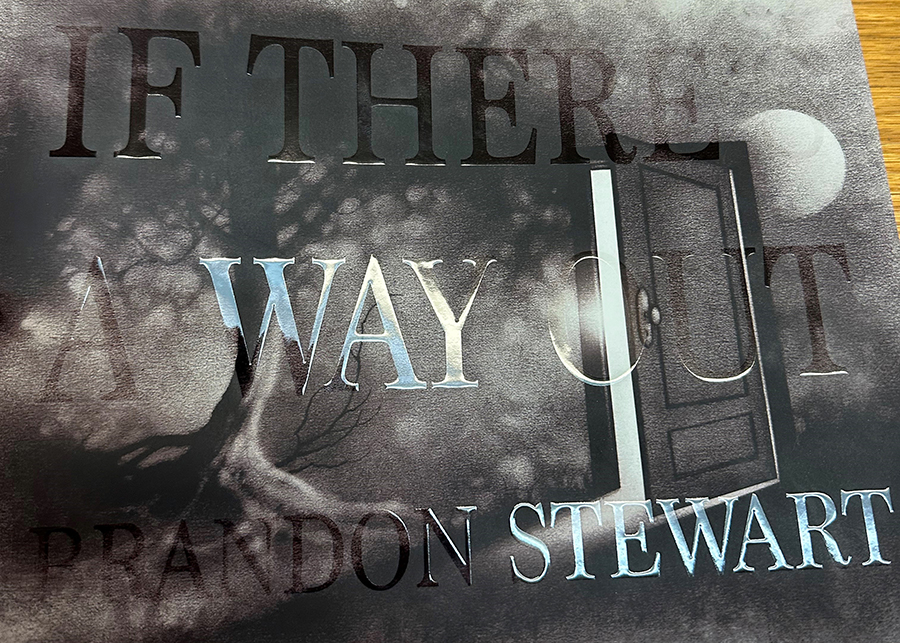
- The Most Durable – A very hardy film lamination, soft-touch matte film lamination is most likely to withstand warm to hot temperatures during storage and transportation. It is also a great option when avoiding scuffs or tears to your cover.
Cons:
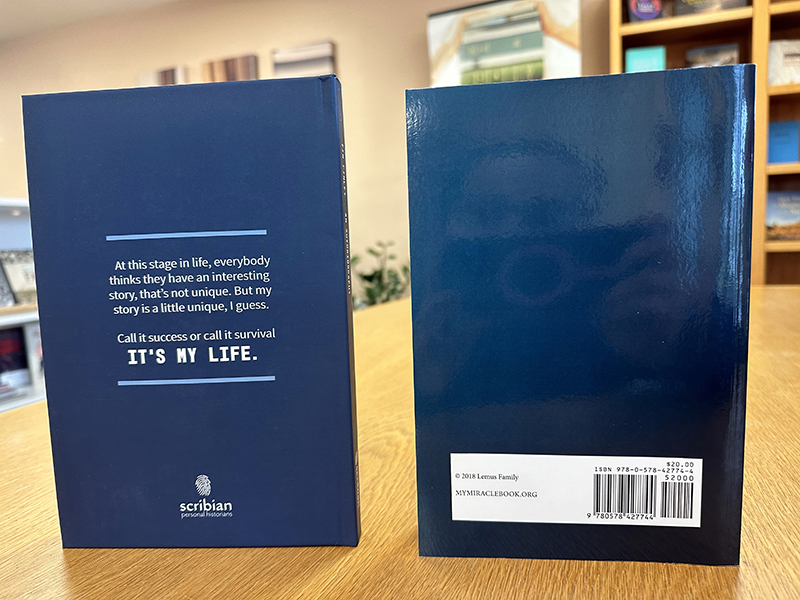
- Dulls or Softens Images – Soft-touch matte film lamination is the most “visible” cover finish. While still being a clear film, it will soften the crisp look of any photography or illustration present on your cover as well as dull the color. If crisp images and brighter colors are a must for your cover we recommend going with the gloss film lamination instead.
- Cover Can Curl – Just like with gloss film lamination, soft-touch matte film lamination is a film that is stretched over the cover with the assistance of a heated lamp. Once the lamination begins to cool and contract, tension occurs between the lamination and cover that leads to curling. This curling will relax overtime, but not completely.
- Can be Seen on the Spine – During the binding process, the soft-touch matte film lamination can lift up along the spine bend which can be visible especially on darker covers.
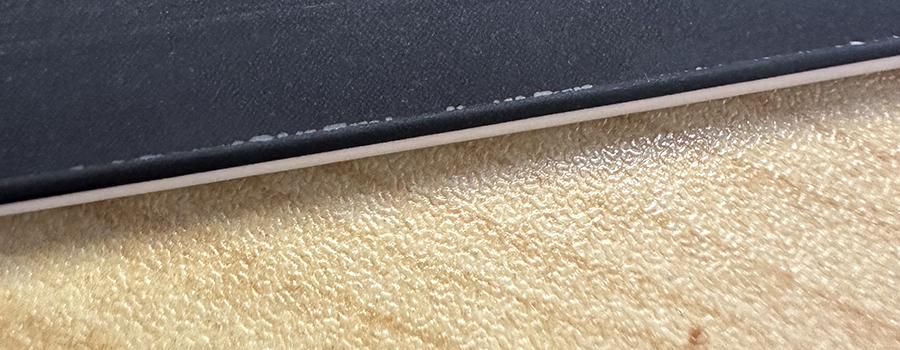
The soft-touch matte film lamination feels and looks personal. It’s always a popular option for novels, memoirs, and journals- something that makes you want to curl up next to a fire while still having the durability to last for a long time!
Final Choice in Choosing Your Cover Finish
If you are writing your first novel or putting together an extensive history book, there is a cover finish perfect for it. It is ultimately up to you what is most important; whether that be low costs, durability, or a certain aesthetic you are looking for your cover. If you are still uncertain, take a look at other books that are similar to yours. See if their covers have a shine or a more muted look to it. Also, take note of any wear or tear from general use or from just sitting in a book shop!
Otherwise, give us a call at Gorham Printing and we would be more than happy to offer our professional recommendation for the cherry to your perfect sundae!
